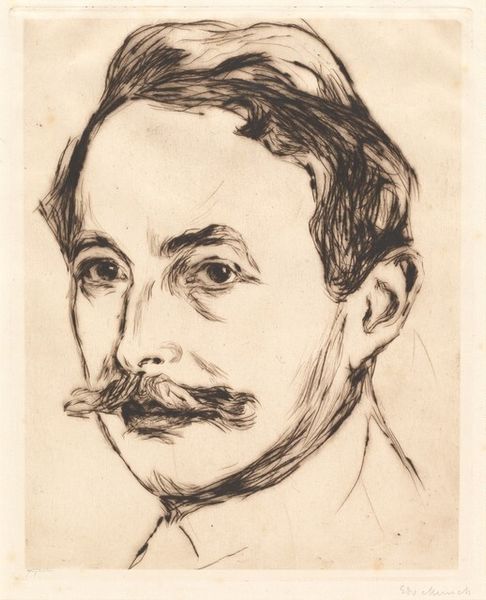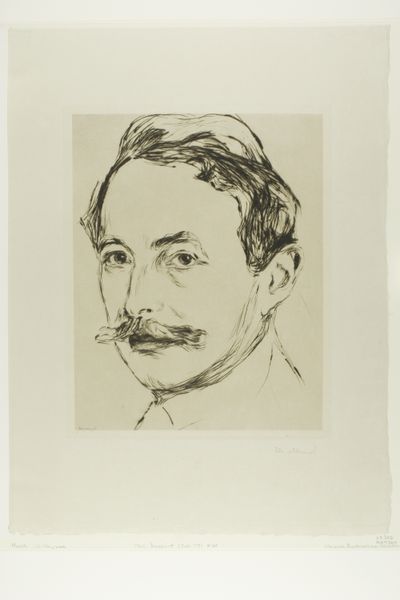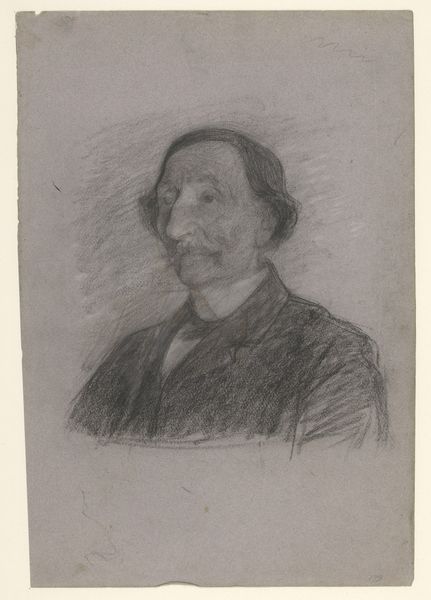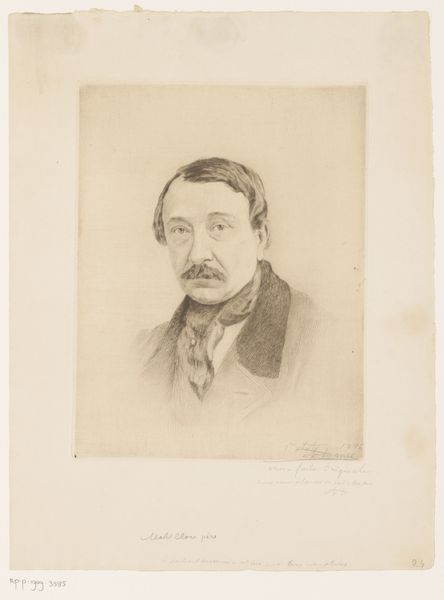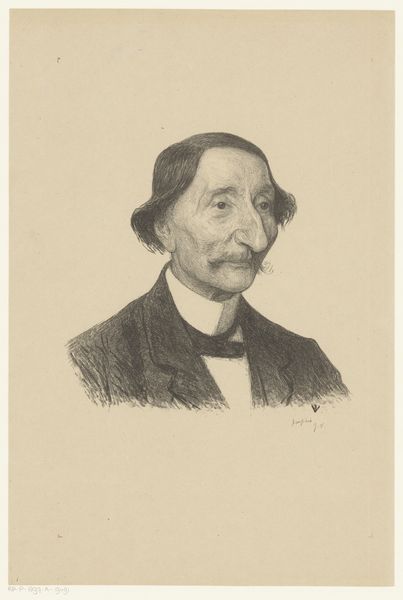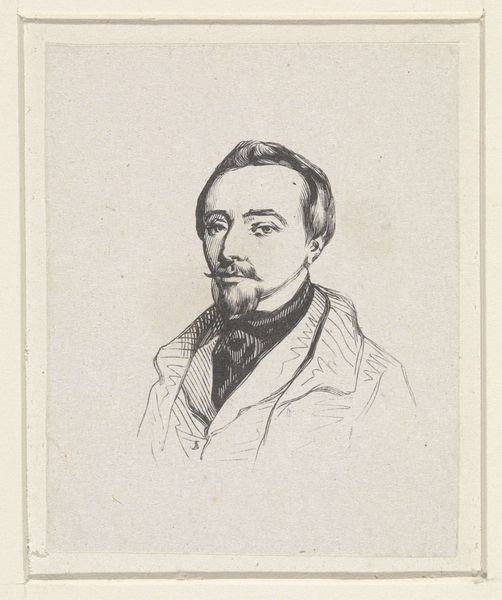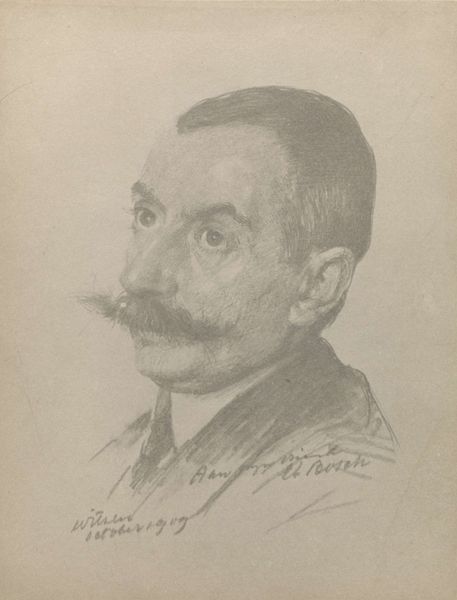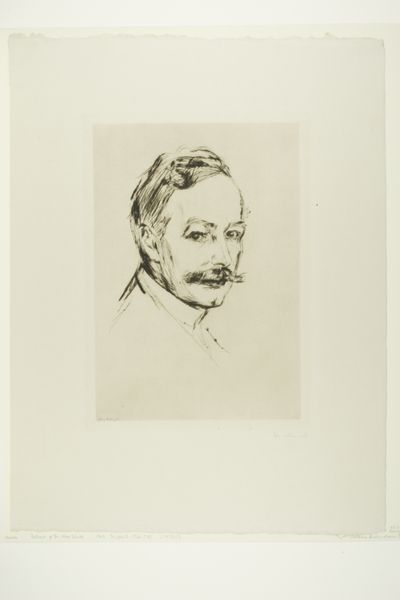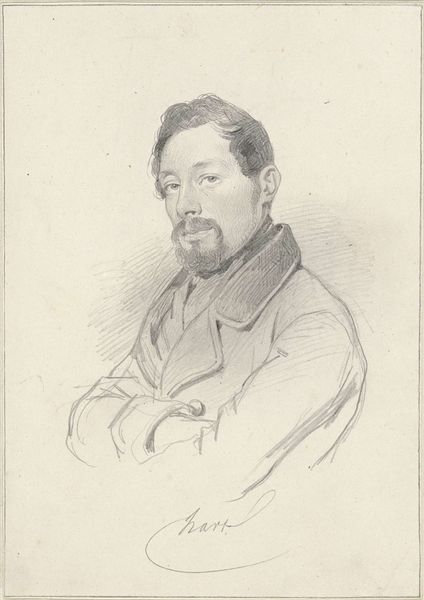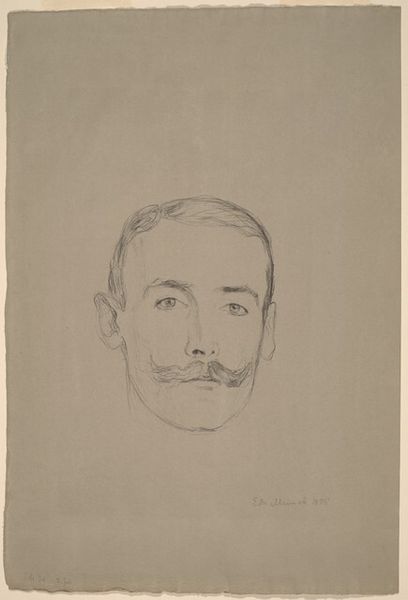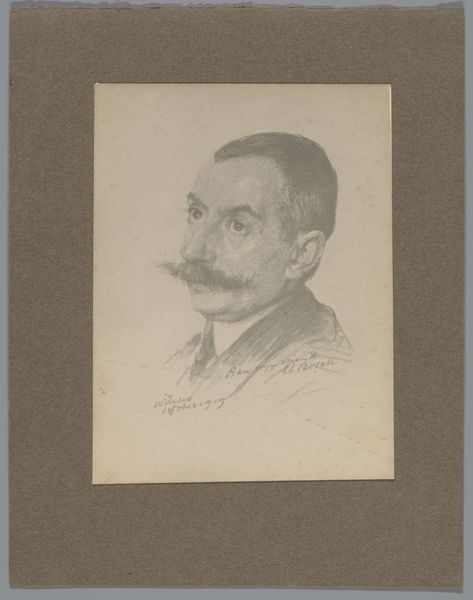
drawing, pencil
#
portrait
#
drawing
#
pencil sketch
#
pencil drawing
#
pencil
#
expressionism
#
line
#
portrait drawing
Copyright: Public Domain: Artvee
Editor: Here we have Edvard Munch’s 1902 pencil drawing, “Dr. Max Linde.” The delicacy of the lines is striking. It’s such an intimate and seemingly quick study. How would you interpret this portrait based solely on its formal elements? Curator: It’s fascinating how Munch uses line to convey form and, dare I say, the essence of the subject. Notice how the density of the pencil strokes around the eyes and hair create a sense of depth and shadow, contrasting with the almost ethereal lightness defining the planes of the face. The subtle asymmetry in the line work adds to the feeling of immediacy, as if capturing a fleeting moment. Are you struck by the tonal variations? Editor: Yes, I noticed the use of varying pressure to define shape. But it still feels incomplete. Is this incompleteness part of its artistic statement? Curator: Indeed. The “unfinished” quality emphasizes the process of creation itself. Munch directs our attention to the art-making, the very act of seeing and representing. There's a raw, unfiltered quality achieved through this simplification, almost as though it exists outside of a highly rendered conventional piece of art. Notice how little there is of background? How is your attention directed by that design choice? Editor: It definitely keeps the focus on the face and its expression. So, it is the intentional orchestration of line, tone, and form which drives the aesthetic? Curator: Precisely. By stripping away extraneous detail, Munch isolates the fundamental elements of representation. This distillation allows the viewer to engage with the portrait on a purely visual and sensory level, quite apart from any narrative or symbolic baggage. Editor: That makes me appreciate the piece much more now. Thank you. Curator: It was my pleasure, too.
Comments
No comments
Be the first to comment and join the conversation on the ultimate creative platform.
